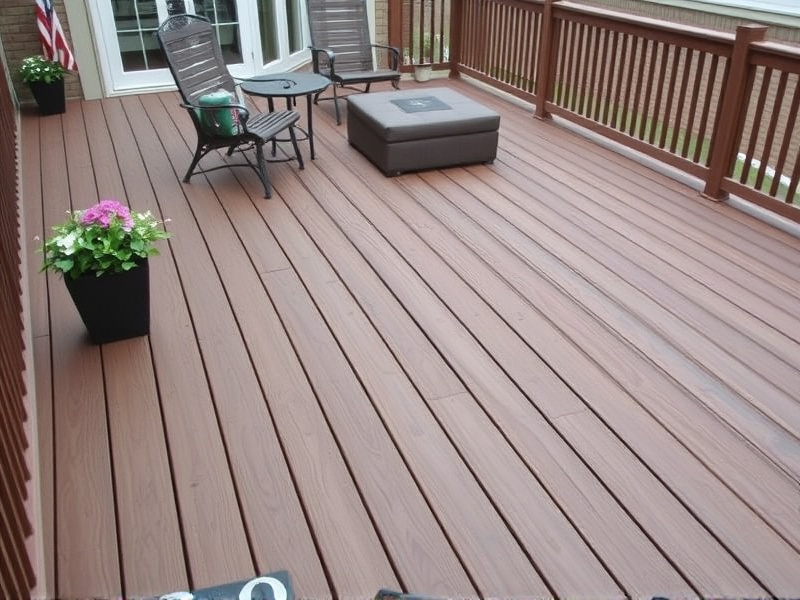Our Location
304 North Cardinal St.
Dorchester Center, MA 02124
Dive into the different types of composite decking materials available in the market, each offering unique benefits and aesthetic appeal.

Composite decking has become a popular alternative to traditional wooden decks due to its durability, low maintenance, and aesthetic appeal. The term “composite decking” refers to materials that are a blend of plastic (often recycled) and wood fibers or other natural materials. These blends can vary significantly in composition, which affects their properties, maintenance requirements, and overall cost-effectiveness. This article will delve into the different types of composite decking available on the market today, focusing on PVC, wood-plastic composites, and cellular PVC.
PVC Composite Decking: PVC composite decking is made from a mixture of polyvinyl chloride (PVC) and wood fibers. One of its main advantages is its resistance to moisture, insects, and rot, making it an excellent choice for areas with high humidity or frequent rainfall. However, PVC can become brittle over time when exposed to UV rays, leading to cracks and fading. Maintenance for PVC composite decking is relatively low; it doesn’t require sealing or staining but may need occasional cleaning with soap and water. In terms of cost, PVC is generally more expensive upfront than wood-plastic composites but offers long-term savings due to its durability and minimal maintenance needs.
Wood-Plastic Composites: Wood-plastic composites (WPC) combine wood fibers with plastic, often derived from recycled sources. This combination results in a material that retains the natural look of wood while offering enhanced durability and resistance to moisture and pests. WPCs are easier to work with during installation compared to other types of composite decking because they can be cut and nailed similarly to traditional wood. Regular cleaning with mild detergent is sufficient for maintaining WPC decks, although some users opt for periodic sealing to enhance appearance and longevity. While WPCs offer a good balance between cost and performance, they tend to be slightly less expensive than PVC composites but more so than cellular PVC.
Cellular PVC Composite Decking: Cellular PVC composite decking is made entirely from PVC, but unlike solid PVC, it contains air pockets within its structure, making it lighter and more flexible. This type of composite decking excels in resisting weather elements, including extreme temperatures and UV radiation, which helps maintain its color and integrity over time. Maintenance-wise, cellular PVC requires very little effort, similar to PVC composite decking. It does not require painting or staining, and regular washing with a mild detergent is usually enough. The initial cost of cellular PVC is higher than both PVC and wood-plastic composites, but its long-term benefits, including extended lifespan and minimal maintenance, make it a worthwhile investment for many homeowners.
Choosing the right type of composite decking depends on several factors, including climate, budget, desired aesthetics, and long-term maintenance considerations. Each type—PVC, wood-plastic composites, and cellular PVC—offers unique benefits that cater to different needs and preferences. Understanding these differences can help you make an informed decision that enhances your outdoor living space while minimizing future hassles.